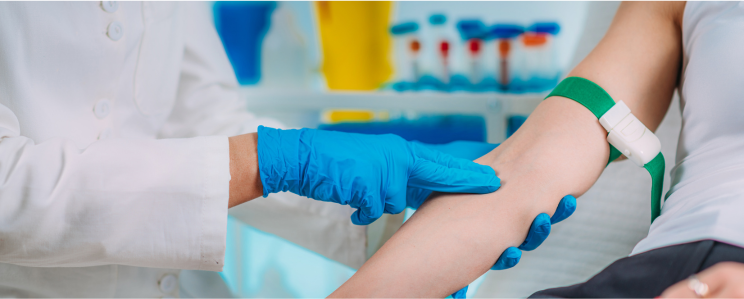Some Known Factual Statements About Northeast Medical Institute - New Haven Campus Phlebotomy Course & Cna Class
Some Known Factual Statements About Northeast Medical Institute - New Haven Campus Phlebotomy Course & Cna Class
Blog Article
The smart Trick of Northeast Medical Institute - New Haven Campus Phlebotomy Course & Cna Class That Nobody is Discussing
Table of ContentsThe Definitive Guide to Northeast Medical Institute - New Haven Campus Phlebotomy Course & Cna ClassNortheast Medical Institute - New Haven Campus Phlebotomy Course & Cna Class Things To Know Before You Get ThisRumored Buzz on Northeast Medical Institute - New Haven Campus Phlebotomy Course & Cna ClassSome Known Details About Northeast Medical Institute - New Haven Campus Phlebotomy Course & Cna Class Indicators on Northeast Medical Institute - New Haven Campus Phlebotomy Course & Cna Class You Should KnowNortheast Medical Institute - New Haven Campus Phlebotomy Course & Cna Class Fundamentals Explained
The use of such tools need to be come with by various other infection prevention and control practices, and training in their use.For settings with reduced resources, expense is a motoring variable in purchase of safety-engineered devices. Where safety-engineered gadgets are not available, proficient use of a needle and syringe is appropriate.
Among the important pens of top quality of care in phlebotomy is the involvement and cooperation of the client; this is equally advantageous to both the health and wellness employee and the client. Clear information either written or verbal need to be available to every individual that undergoes phlebotomy. Annex F supplies example message for clarifying the blood-sampling treatment to a client. In the blood-sampling space for an outpatient department or center, supply a comfy reclining sofa with an arm rest.
Rumored Buzz on Northeast Medical Institute - New Haven Campus Phlebotomy Course & Cna Class
Make certain that the signs for blood sampling are plainly defined, either in a created procedure or in recorded guidelines (e.g. in a lab type). At all times, follow the strategies for infection prevention and control provided in Table 2.2. Infection avoidance and control practices. Accumulate all the devices required for the treatment and area it within risk-free and very easy reach on a tray or trolley, making certain that all the products are plainly visible.
Where the individual is adult and conscious, follow the steps described below. Present on your own to the person, and ask the patient to mention their complete name. Examine that the laboratory type matches the person's identification (i.e. match the person's details with the research laboratory type, to make certain accurate recognition). Ask whether the license has allergies, phobias or has actually ever before fainted throughout previous shots or blood draws.
Make the individual comfy in a supine placement (if feasible). The patient has a right to reject a test at any type of time before the blood tasting, so it is vital to make certain that the patient has understood the treatment - PCT Training.
Facts About Northeast Medical Institute - New Haven Campus Phlebotomy Course & Cna Class Uncovered
Expand the individual's arm and examine the antecubital fossa or lower arm. Situate a vein of an excellent size that shows up, straight and clear. The representation in Section 2.3, shows common settings of the vessels, yet many variations are possible. The median cubital capillary exists in between muscles and is generally the most simple to penetrate.
DO NOT place the needle where capillaries are drawing away, due to the fact that this raises the chance of a haematoma. Situating the blood vessel will certainly help in identifying the appropriate size of needle.
Samplings from central lines bring a risk of contamination or wrong research laboratory examination outcomes. It is acceptable, yet not optimal, to attract blood samplings when initial introducing an in-dwelling venous tool, before attaching the cannula to the intravenous liquids.
Northeast Medical Institute - New Haven Campus Phlebotomy Course & Cna Class Fundamentals Explained
Allow the area to dry. Failing to enable adequate get in touch with time boosts the threat of contamination. DO NOT touch the cleansed site; specifically, DO NOT position a finger over the vein to lead the shaft of the exposed needle. It the site is touched, repeat the disinfection. Do venepuncture as complies with.
Ask the patient to develop a clenched fist so the veins are more popular. Get in the vein promptly at a 30 degree angle or less, and continue to present the needle along the capillary at the easiest angle of entrance - PCT Training. Once enough blood has actually been collected, launch the tourniquet prior to taking out the needle
Northeast Medical Institute - New Haven Campus Phlebotomy Course & Cna Class Fundamentals Explained
Take out the needle delicately and apply mild pressure to the website with a tidy gauze or completely dry cotton-wool sphere. Ask the person to hold the gauze or cotton wool in place, with the arm extended and elevated. Ask the person NOT to flex the arm, because doing so creates a haematoma.

Getting My Northeast Medical Institute - New Haven Campus Phlebotomy Course & Cna Class To Work
Do not push the syringe bettor because extra stress boosts the danger of haemolysis. Where possible, keep televisions in a shelf and move the shelf towards you. Infuse downwards right into the appropriate coloured stopper. DO NOT eliminate the stopper since it will certainly release the vacuum cleaner. If the sample tube does not have a rubber stopper, inject very gradually into the tube as lessening the stress and velocity made use of to move the specimen decreases the threat of haemolysis.

Report this page